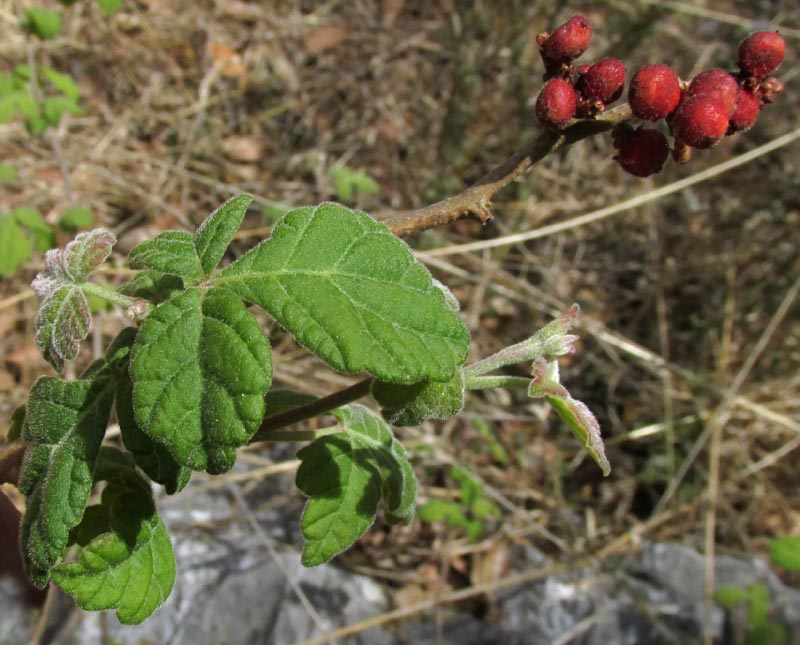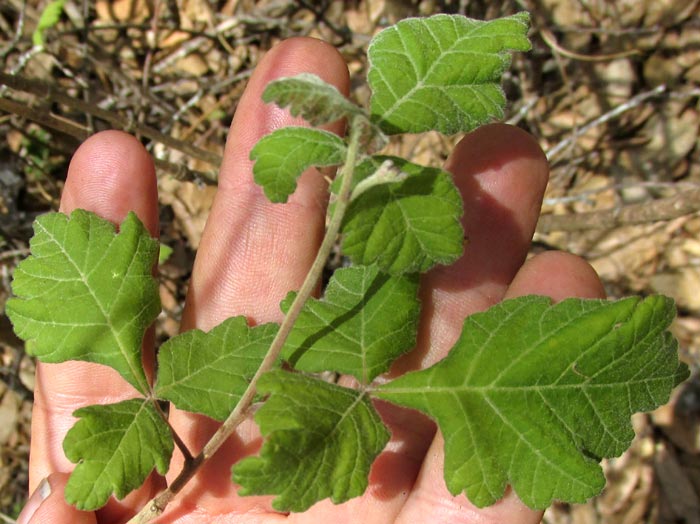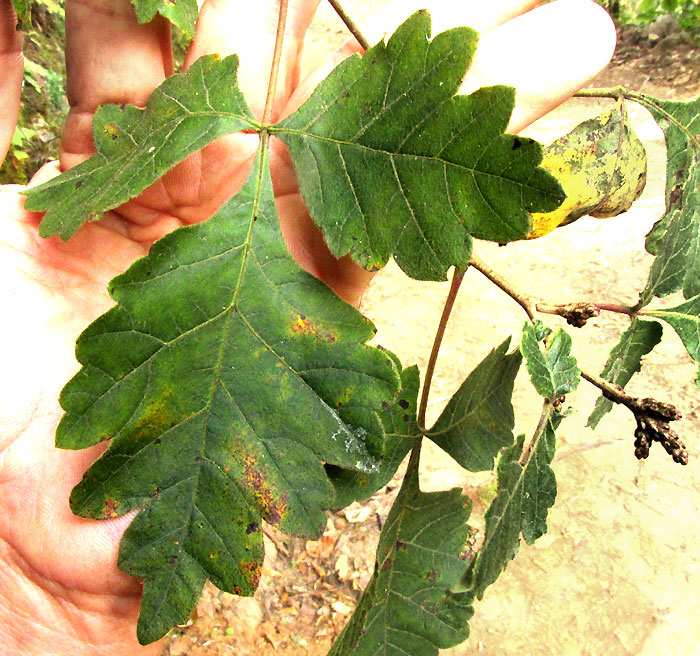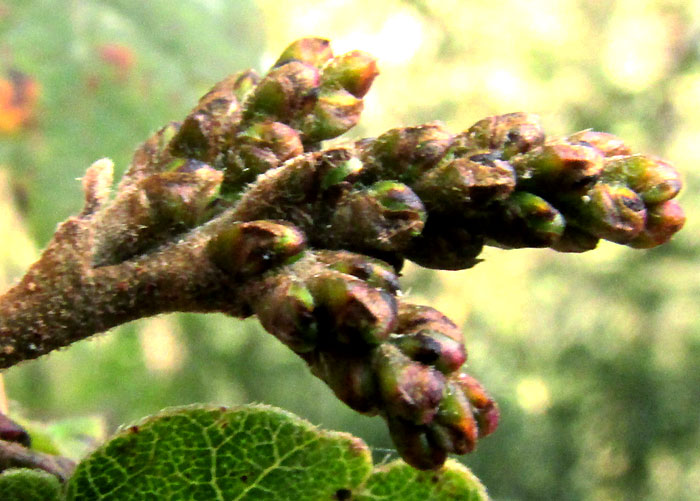Excerpts from Jim Conrad's
Naturalist Newsletter
entry from field notes dated April 15, 2022, taken in disturbed/reforesting borderline cloudforest within 1km of Valle de los Fantasmas, elevation ±2,320m (7600 ft), with limestone bedrock; about 40kms (24 miles), straight-line, ESE of San Luis Potosí, San Luis Potosí state, MÉXICO, (N22.06°, W100.62°)
FRAGRANT SUMAC IN FRUIT

Back in my student days in Kentucky, the above bush, usually about chest high, was a favorite plant, if only because it was so easy to identify, especially in fruit, as in the picture. There was simply no other woody plant in the area bearing leaves divided into three leaflets (trifoliate), and producing dark red, spherical fruits the size of little peas. A better look at the trifoliate leaves appears below:

And here are the berry-type fruits:

This is the Fragrant Sumac, RHUS AROMATICA. As a budding naturalist, this bush fascinated me because it was in the Cashew or Sumac Family, the Anacardiaceae, famous for harboring Poison Ivy, Poison Oak and Poison Sumac. In fact, a 1990 paper, "The Poisonous Anacardiaceae Genera of the World," tells us that 25 of the approximately 76 genera of this family are reported to be poisonous. Yet I'd learned from a book to make a nice "tea" with the red berries. Drinking that tea was attractive to teenager me, because I felt as if I were flirting with death. Above you can see that the berries are covered with hairs. The hairs bear glands which hot (not boiling) water bursts, releasing acid into the water. Add sugar to the acidic water, and it's a neat drink. I also read that indigenous Americans dried the berries and ground them into powder, which they mixed with cornmeal for porridge and baked cakes.
So, what a treat as on old man to find the same species here in the arid highlands of central Mexico. Fragrant Sumac is distributed all the way from Canada south through the US into southern Mexico. Covering such a large area, it's not surprising that varieties of the species have been recognized. According to the authoritative Flora del Bajío, our pictures show the variety schmidelioides, whose side leaflets are broadest below their middles, and the middle leaflet is conspicuously longer than wide. Variety schmidelioides is endemic just to central and southern Mexico, between 1250-2500m (4100-8200ft).
entry from field notes dated January 19, 2023, taken along steep, one-lane gravel road ascending forested, northeast-facing mountain slope, elevation ±2,380m (7600 ft); bedrock of Cretaceous limestone; on the south side of Pinal de Amoles, Querétaro state, MÉXICO, (N21.134°, W99.629°)
FRAGRANT SUMAC FLOWERING

In mid January in the Eastern Sierra Madres on steep, pine-covered slopes at 2,380m, Fragrant Sumac  leaves are still green, though here and there a few leaves display yellow, as seen above. No fruits are apparent, but catkin-like, immature flowering heads are appearing at branch tips, better shown at the right.
leaves are still green, though here and there a few leaves display yellow, as seen above. No fruits are apparent, but catkin-like, immature flowering heads are appearing at branch tips, better shown at the right.
Even here Fragrant Sumac is considered deciduous. The Flora del Bajío documenting this area's flowering plants, reports that Rhus aromatiaca flowers have been noted in this region between November and April, mostly on bushes without leaves. However, this leafy bush bore a few flowers:

It's interesting to note that, like the future fruits, the ovary at each flower's center is red and hairy.